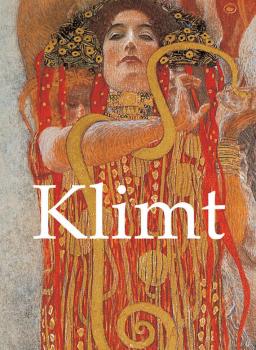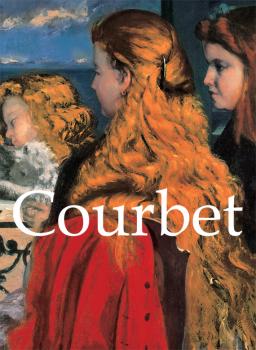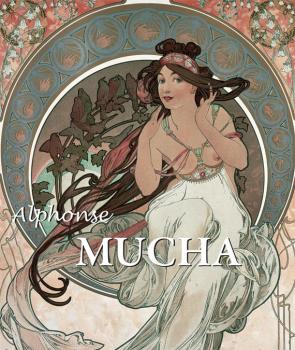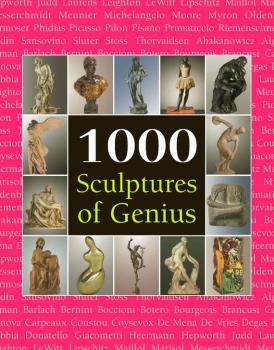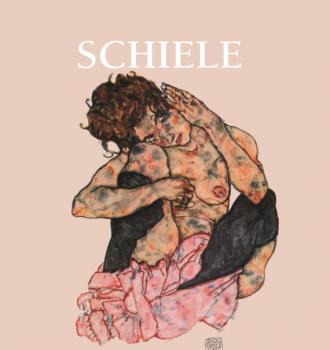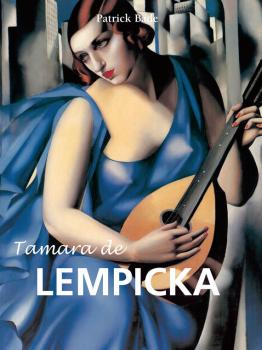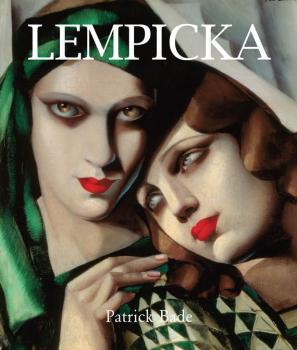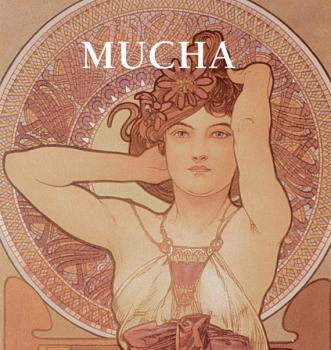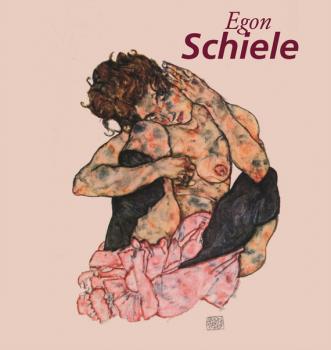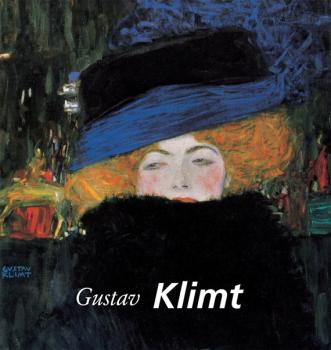Patrick Bade
Список книг автора Patrick BadeKlimt
“I am not interested in myself as a subject for painting, but in others, particularly women…”Beautiful, sensuous and above all erotic, Gustav Klimt’s paintings speak of a world of opulence and leisure, which seems aeons away from the harsh, post-modern environment we live in now. The subjects he treats – allegories, portraits, landscapes and erotic figures – contain virtually no reference to external events, but strive rather to create a world where beauty, above everything else, is dominant. His use of colour and pattern was profoundly influenced by the art of Japan, ancient Egypt, and Byzantium. Ravenne, the flat, two-dimensional perspective of his paintings, and the frequently stylised quality of his images form an oeuvre imbued with a profound sensuality and one where the figure of woman, above all, reigns supreme. Klimt’s very first works brought him success at an unusually young age. Gustav, born in 1862, obtained a state grant to study at Kunstgewerbeschule (the Vienna School of Arts and Crafts) at the age of fourteen. His talents as a draughtsman and painter were quickly noticed, and in 1879 he formed the Künstlercompagnie (Artists’ Company) with his brother Ernst and another student, Franz Matsch. The latter part of the nineteenth century was a period of great architectural activity in Vienna. In 1857, the Emperor Franz Joseph had ordered the destruction of the fortifications that had surrounded the medieval city centre. The Ringstrasse was the result, a budding new district with magnificent buildings and beautiful parks, all paid for by public expenses. Therefore the young Klimt and his partners had ample opportunities to show off their talents, and they received early commissions to contribute to the decorations for the pageant organised to celebrate the silver wedding anniversary of the Emperor Franz Joseph and the Empress Elisabeth. In 1894, Matsch moved out of their communal studio, and in 1897 Klimt, together with his closest friends, resigned from the Künstlerhausgenossenschaft (the Cooperative Society of Austrian Artists) to form a new movement known as the Secession, of which he was immediately elected president. The Secession was a great success, holding both a first and second exhibition in 1898. The movement made enough money to commission its very own building, designed for it by the architect Joseph Maria Olbrich. Above the entrance was its motto: “To each age its art, to art its freedom.” From around 1897 onward, Klimt spent almost every summer on the Attersee with the Flöge family. These were periods of peace and tranquillity in which he produced the landscape paintings constituting almost a quarter of his entire oeuvre. Klimt made sketches for virtually everything he did. Sometimes there were over a hundred drawings for one painting, each showing a different detail – a piece of clothing or jewellery, or a simple gesture. Just how exceptional Gustav Klimt was is perhaps reflected in the fact that he had no predecessors and no real followers. He admired Rodin and Whistler without slavishly copying them, and was admired in turn by the younger Viennese painters Egon Schiele and Oskar Kokoschka, both of whom were greatly influenced by Klimt.
Courbet
Ornans, Courbet’s birthplace, is near the beautiful valley of the Doubs River, and it was here as a boy, and later as a man, that he absorbed the love of landscape. He was by nature a revolutionary, a man born to oppose existing order and to assert his independence; he had that quality of bluster and brutality which makes the revolutionary count in art as well as in politics. In both directions his spirit of revolt manifested itself. He went to Paris to study art, yet he did not attach himself to the studio of any of the prominent masters. Already in his country home he had had a little instruction in painting, and preferred to study the masterpieces of the Louvre. At first his pictures were not sufficiently distinctive to arouse any opposition, and were admitted to the Salon. Then followed the Funeral at Ornans, which the critics violently assailed: “A masquerade funeral, six metres long, in which there is more to laugh at than to weep over.” Indeed, the real offence of Courbet’s pictures was that they represented live flesh and blood. They depicted men and women as they really are and realistically doing the business in which they are engaged. His figures were not men and women deprived of personality and idealised into a type, posed in positions that will decorate the canvas. He advocated painting things as they are, and proclaimed that la vérité vraie must be the aim of the artist. So at the Universal Exposition of 1855 he withdrew his pictures from the exhibition grounds and set them in a wooden booth, just outside the entrance. Over the booth he posted a sign with large lettering. It read, simply: “Courbet – Realist.” Like every revolutionary, he was an extremist. He ignored the fact that to every artist the truth of nature appears under a different guise according to his way of seeing and experiencing. Instead, he adhered to the notion that art is only a copying of nature and not a matter also of selection and arrangement. In his contempt for prettiness Courbet often chose subjects which may fairly be called ugly. But that he also had a sense of beauty may be seen in his landscapes. That sense, mingled with his capacity for deep emotion, appears in his marines – these last being his most impressive work. Moreover, in all his works, whether attractive or not to the observer, he proved himself a powerful painter, painting in a broad, free manner, with a fine feeling for colour, and with a firmness of pigment that made all his representations very real and stirring.
Alphonse Mucha
Born in 1860 in a small Czech town, Alphonse Mucha (1860-1939) was an artist on the forefront of Art Nouveau, the modernist movement that swept Paris in the 1910s, marking a return to the simplicity of natural forms, and changing the world of art and design forever. In fact, Art Nouveau was known to insiders as the “Mucha style” for the legions of imitators who adapted the master’s celebrated tableaux. Today, his distinctive depictions of lithe young women in classical dress have become a pop cultural touchstone, inspiring album covers, comic books, and everything in between. Patrick Bade and Victoria Charles offer readers an inspiring survey of Mucha’s career, illustrated with over one hundred lustrous images, from early Parisian advertisements and posters for Sandra Bernhardt, to the famous historical murals painted just before his death, at the age of 78, in 1939.
1000 Scupltures of Genius
From antiquity to the 20th century, this sculpture collection offers a truly original vision of Western art. Here are the most sensual and harmonious masterworks to the most provocative and minimalist sculptures. Sculpture shapes the world and our concept of beauty, leaving everlasting silhouettes and always creating new intriguing ones. These masterworks are the mirror of an era, of an artist and his public and through this sculpture gallery, one visits not only the history of art, but history as a whole. Between the acclaimed ideals of beauty and the most controversial works, 1,000 Sculptures of Genius will give you a true panoramic view of Western sculpture. Along with numerous references, comments on masterworks and biographies, this work enables the reader to rediscover Western world heritage and is the perfect guide for art students and statuary lovers.
Schiele
La obra de Egon Schiele es tan particular que se resiste a la categorización. Admitido en la Academia Vienesa de las Bellas Artes cuando apenas contaba con dieciséis años, fue un artista de extraordinaria precocidad, cuya consumada habilidad en la manipulación de las líneas le dio a sus obras una tersa expresividad. Profundamente convencido de su propia importancia como artista, Schiele logró más en su corta existencia que muchos otros artistas en toda una vida. Sus raíces se encontraban en los Jugendstil del movimiento de Secesión vienés. Como toda una generación, cayó bajo la abrumadora influencia de los más carismáticos y celebrados artistas vieneses, como Gustav Klimt. A su vez, Klimt reconoció el gran talento de Schiele y apoyó al joven artista, que en sólo un par de años ya se alejaba del estilo sensual decorativo de su mentor. Alrededor de 1910, Schiele comenzó un periodo de intensa creatividad, embarcado en una estoica exposición de la forma humana, entre la que incluía la suya propia, tan penetrante que es evidente que examinaba una anatomía más psicológica, espiritual y emocional que física. Pintó muchos paisajes de pueblos y campos, hizo retratos formales y trató temas alegóricos, pero fueron sus trabajos más francos en papel, muchos de los cuales son abiertamente eróticos, junto con su tendencia a usar modelos menores de edad, lo que hizo que Schiele fuera vulnerable a al censura moral. En 1912, fue encarcelado por sospecha de una serie de delitos entre los que se incluía el secuestro, la violación y la inmoralidad pública. Los cargos más graves terminaron por retirarse (todos excepto el de inmoralidad pública) pero Schiele pasó aproximadamente tres semanas terribles en prisión. Los círculos expresionistas alemanes dieron una recepción poco entusiasta a los trabajos de Schiele. Su compatriota Kokoschka obtuvo un éxito mayor entre ellos. Aunque admiraba a los artistas de Munich de Der Blaue Reiter, por ejemplo, ellos lo rechazaron. Más tarde, durante la Primera Guerra Mundial, su obra se volvió mejor conocida y en 1916, apareció en un ejemplar de la revista Berlinesa expresionista de izquierda, Die Aktion. Schiele era como un gusto adquirido. Desde muy joven se le consideró un genio. Esto le ganó el apoyo de un pequeño grupo de sufridos coleccionistas y admiradores, pero aún así, durante varios años de su vida, sus finanzas fueron precarias. Con frecuencia estaba endeudado y en ocasiones se veía obligado a usar materiales baratos, pintando en papel para envolver o en cartón, en lugar de papel especial o en lienzos. No fue sino hasta 1918 que disfrutó de su primer éxito público sustancial en Viena. Por desgracia, poco después él y su esposa Edith fueron víctimas de la epidemia de influenza de 1918, la misma que acabó con Klimt y con millones de personas más, y murieron uno a los pocos días del otro. Schiele tenía sólo veintiocho años de edad.
Tamara de Lempicka
Los claros retratos metálicos, desnudos y naturalezas muertas de Tamara de Lempicka resumen el espíritu del Art Déco y del apogeo del Jazz, además de reflejar la vida elegante y hedonista de la élite adinerada, exclusiva y glamurosa de la París de entre guerras. En el arte de Lempicka confluyen una formidable técnica clásica con elementos prestados del cubismo, combinación que en su momento representó el culmen de la modernidad y de la moda, toda vez que se inspiraba en maestros tradicionales del retrato, como Ingres y Bronzino. Este libro destaca la pureza racional y la línea clara y sencilla de las mejores obras de Lempicka durante las décadas de 1920 y 1930, y las huellas que hay en ellas de la vida de esta talentosa artista llena de glamur. Este texto explora sus primeros años en Polonia y en la Rusia zarista durante el cambio de siglo, su período de gloria en París, y los largos años en Estados Unidos, pasando por el redescubrimiento de su obra en la década de 1970, cuando sus retratos alcanzaron un estatus icónico y fama mundial.
Lempicka
Die Portraits, Akte und Stillleben von Tamara Lempicka (1898-1980) atmen den Geist des Art Deco und des Jazz Age. Sie spiegeln den eleganten und hedonistischen Lebensstil einer glamourösen Elite in Paris in der Zeit zwischen den beiden Weltkriegen wider. Ihre Kunst kombiniert eine hervorragende klassische Technik mit Elementen aus dem Kubismus. Lempickas Schaffen ist der Höhepunkt eleganter Modernität und greift gleichzeitig auf Meisterportraitisten wie Ingres oder Bronzino zurück. Das vorliegende Buch befasst sich mit der rationalen Schönheit ihrer besten Werke in den 1920er und 1930er Jahren und der außergewöhnlichen Lebensgeschichte einer talentierten und schillernden Frau. Sie beginnt ihr Leben zur Jahrhundertwende in Polen und dem zaristischen Russland, dann verbringt sie glorreiche Jahre in Paris und eine lange Zeit des Misserfolgs in Amerika, bis sie schließlich in den 70er Jahren wieder entdeckt wird und ihre Bilder den Status einer Ikone und weltweite Popularität erhalten.
Mucha
Alfons Mucha ist der ungekrönte König der Jugendstil-Illustration. Für viele Menschen sind Muchas überirdisch schöne, von floralen Ornamentgeflechten umgegebene Frauen, die erste Assoziation mit der beliebten Kunstrichtung der Wende zum 20. Jahrhundert. Muchas Kunst, die sich über die Jahrzehnte immer wieder neuer Beliebtheit erfreuen durfte, ist vor allem seit den 1960er Jahren nicht mehr aus dem Sortiment von Plakat– und Reproduktionsanbietern wegzudenken. Das vorliegende Werk bemüht sich nicht nur darum, einen umfassenden Überblick über Muchas Schaffen zu geben, sondern auch, dem Mann hinter der Kunst gerecht zu werden: seinem Leben, seiner Entwicklung als Künstler und seinem leidenschaftlichen Patriotismus für sein Vaterland, der damaligen Tschechoslowakei.
Schiele
Pornografisch, unsittlich, amoralisch und letztendlich sogar „entartet“ wurde die Kunst des Egon Schiele genannt. Lange Zeit verkannt und verunglimpft, hat der geniale, von Selbstobsession getriebene Künstler dennoch unbeirrt seine künstlerische Suche nach der Essenz der weiblichen Sexualität und nach einer neuen, ausgeglichenen Selbstwahrnehmung fortgesetzt; eine Suche, die in einer Vielzahl von Selbstporträts und Aktzeichnungen zum Ausdruck gebracht wurde. Dieser Band bemüht sich darum, die volle künstlerische Bandbreite des Künstlers zu erfassen, seine bekannten Porträts, Akte und Selbstporträts mit seinen weniger bekannten Landschafts –und Städtebildern zu kontrastieren und einen Einblick in die Seele des umstrittenen Österreichers zu bieten.
Klimt
Gustav Klimt (1862-1918) war zum Ende des 19. Jahrhunderts nicht nur einer der einflussreichsten Künstler, sondern gründete zudem die Bewegung der Wiener Secession. Mithilfe dieser Bewegung übte er Kritik an der traditionellen Kunst, die sich durch ihren Widerstand gegen Veränderungen sowie Intoleranz gegenüber bestimmten modernen Vorstellungen auszeichnete. Klimt ließ sich durch den langsamen aber sicheren Niedergang sowie die Vielfalt der Kulturen der Österreichisch-Ungarischen Monarchie inspirieren. Bei Klimt spielten Erotik und Sinnlichkeit eine sehr große Rolle, und neben Schiele und Kokoschka zählte er zu den großen Meistern des Expressionismus. Das vorliegende Buch vereint eine erlesene Auswahl Klimts bekanntester Gemälde und einen Text, der den außergewöhnlichen Eklektizismus dieses großen Künstlers zu vermitteln vermag.
